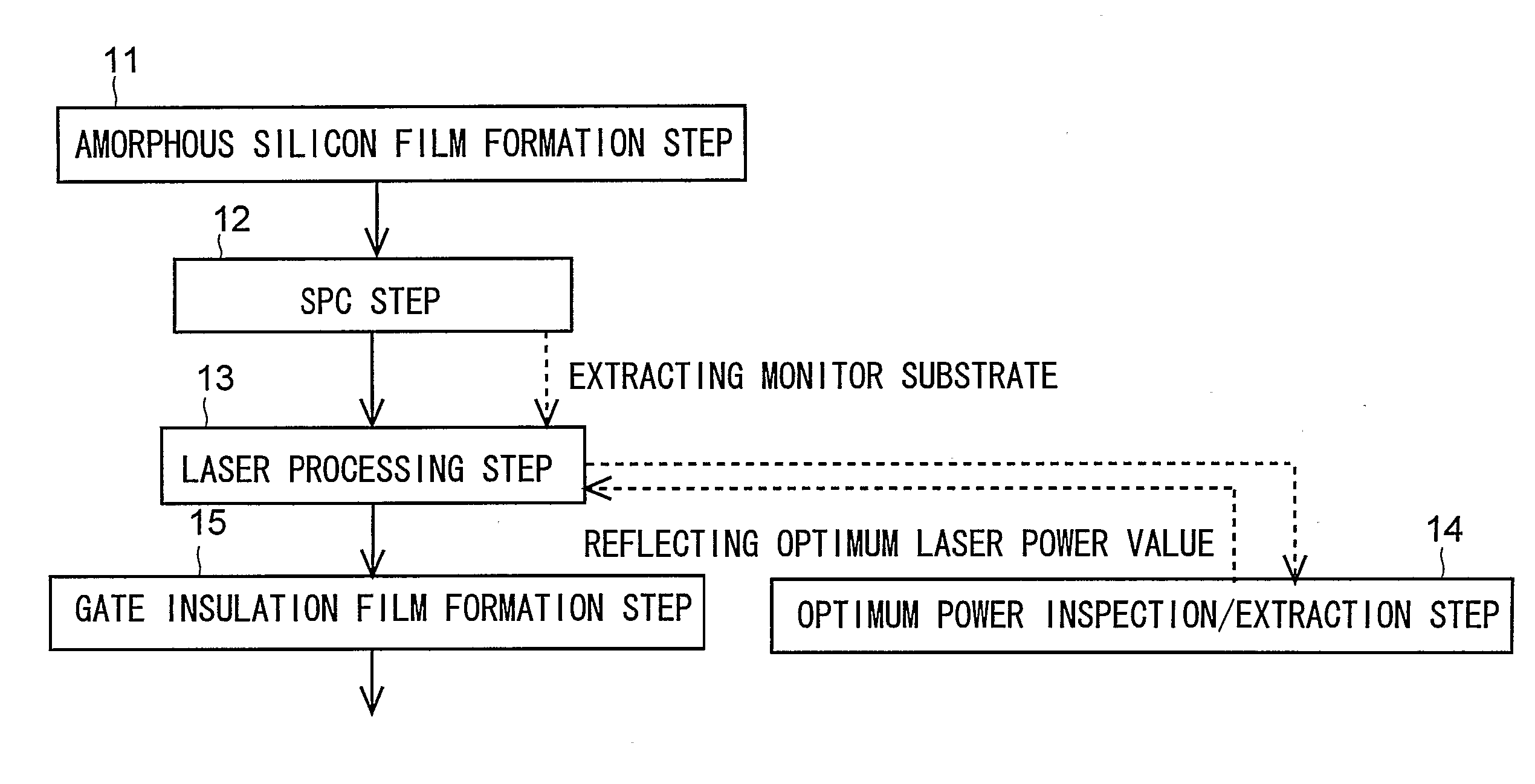Method for fabricating a semiconductor device and apparatus for inspecting a semiconductor
- Summary
- Abstract
- Description
- Claims
- Application Information
AI Technical Summary
Benefits of technology
Problems solved by technology
Method used
Image
Examples
Embodiment Construction
[0065] Hereinafter, a description will be given of examples of methods according to the present invention for producing polycrystalline silicon film by using a catalyst. FIG. 2 is a flow chart showing an example of a production method according to the invention. As shown in FIG. 2, in this embodiment, the method for producing polycrystalline silicon film by using a catalyst (the CGS, short for continuous grain silicon, method) includes: an amorphous silicon film formation step 11 for forming amorphous silicon film on a glass substrate by chemical vapor growth; an SPC step 12 for adding a crystallization-promoting metal element (for example, nickel) to the amorphous silicon film and then heating it so as to form crystalline silicon that extends starting from regions to which the metal element has been added; a laser processing step 13 for irradiating the amorphous silicon film having undergone the SPC step with laser so as to form polycrystalline silicon film over the entire area of ...
PUM
| Property | Measurement | Unit |
|---|---|---|
| Angle | aaaaa | aaaaa |
| Angle | aaaaa | aaaaa |
| Wavelength | aaaaa | aaaaa |
Abstract
Description
Claims
Application Information
 Login to View More
Login to View More - R&D
- Intellectual Property
- Life Sciences
- Materials
- Tech Scout
- Unparalleled Data Quality
- Higher Quality Content
- 60% Fewer Hallucinations
Browse by: Latest US Patents, China's latest patents, Technical Efficacy Thesaurus, Application Domain, Technology Topic, Popular Technical Reports.
© 2025 PatSnap. All rights reserved.Legal|Privacy policy|Modern Slavery Act Transparency Statement|Sitemap|About US| Contact US: help@patsnap.com



